Trees Birds Mammals Fish Amphibians Reptiles
Wild Algarve
Bookshop
Agaricus bohusii Bon - Medusa Mushroom
Phylum: Basidiomycota - Class: Agaricomycetes - Order: Agaricales - Family: Agaricaceae
Distribution - Taxonomic History - Etymology - Identification - Culinary Notes - Reference Sources
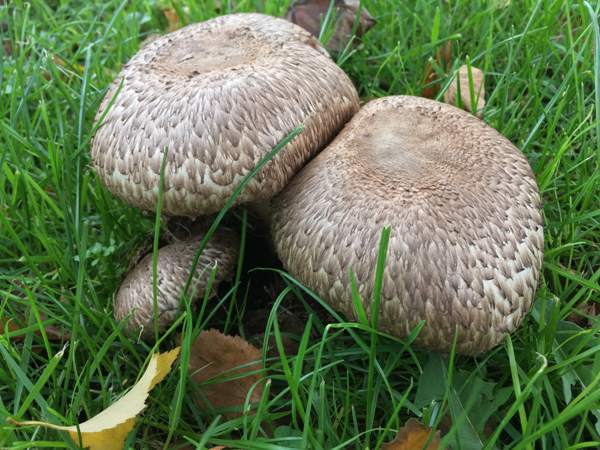
Agaricus bohusii is one of the most attractive of the Agaricus species - the true mushrooms, as some peoople call them. Although occasionally occurring singly, this species is most often seen fruiting in fasciculate groups with the stem bases conjoined at a common point. The common name Medusa Mushroom refers to the Greek gorgon, a beast in the form of a woman with snakes instead of hair.
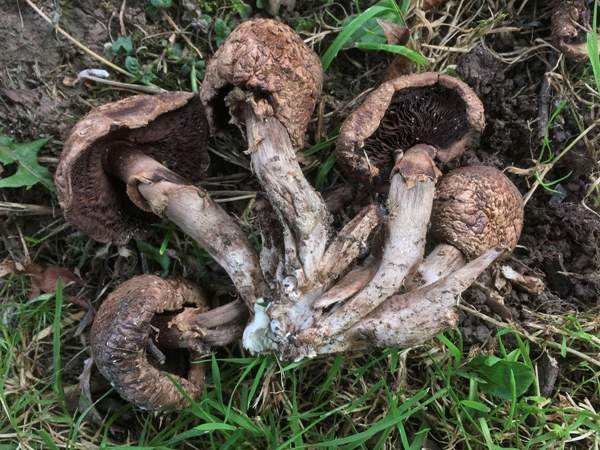
The curved stems of conjoined Agaricus bohusii mushrooms have a vaguely snake-like appearance.
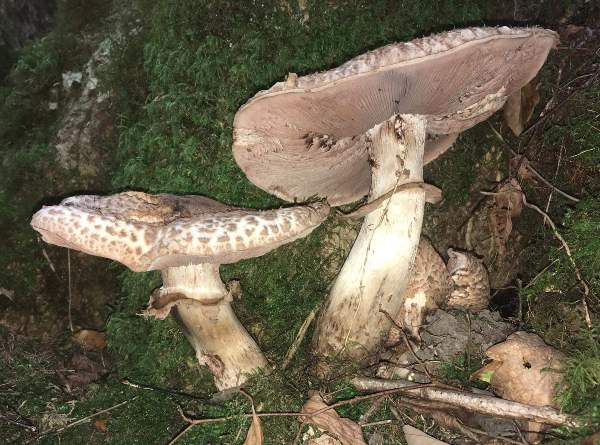
Distribution
Agaricus bohusii is a rare find in Britain and Ireland; it occurs also in parts of mainland Europe. The specimens shown on this page were photographed in southern England.
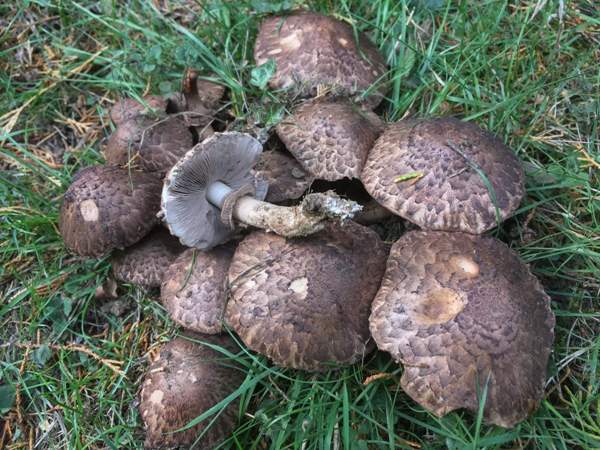
Taxonomic history
This mushroom was first described and validly named in 1983 by the French mycologist Marcel Bon (1925 - 2014), who gave this species the binomial scientific name Agaricus bohusii by which it is still known today.
Synonyms of Agaricus bohusii include Agaricus elvensis M.J. Berkeley & C.E. Broome sensu Cooke.
Etymology
The specific epithet bohusii honours the 20th century Hungarian mycologist Dr. Gabor Bohus.
Identification guide
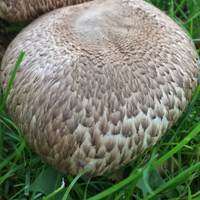 |
Cap
5 to 15 (exceptionally 20) cm across; initially globose becoming convex, with recurved pointed dark brown scales on a whitish or pale brown background; very light brown flesh turning reddish brown and then darkening when cut. |
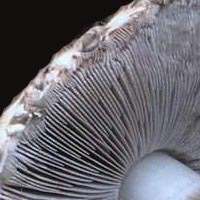 |
Gills
Free; crowded; whitiish or pale pink, turning reddish brown and then dark brown with age. |
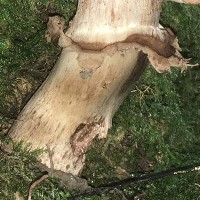 |
Stem
7 - 20cm long and 1 - 2.5cm diameter., with a tapering base and a superior thick double ring; stem surface very pale brown, smooth above the ring and fibrous and somewhat darker brown below. |
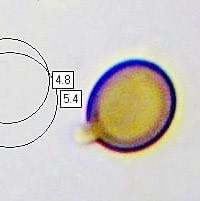 |
Spores
Subglobose to ovoid, smooth, 5 - 7 x 4.5 - 6µm.
Spore print
Chocolate brown. |
Odour/taste |
Odour faintly mushroomy; taste not distinctive. |
Habitat & Ecological role |
Saprobic, usually fasciculate (in tight bunches) in mixed woodlands, grassy parks, verges and churchyards; occasionally on garden lawns. |
Season |
July to late October in Britain and Ireland. |
Similar species |
Agaricus haemorrhoidarius is similar, with grey-brown
scales and a stout stem; it occurs under broad-leaved trees,
notably oak and beech.
Agaricus augustus, The Prince, is larger and smells of bitter almonds. |
Culinary Notes
Although considered a good edible species, Agaricus bohusii is so rare in Britain and Ireland that it is neither appropriate nor worth seeking for culinary use.
Reference Sources
Bon, M. Agaricus bohusii in Documents Mycologiques 13 (49): 56 (1983)
Fascinated by Fungi, 2nd Edition, Pat O'Reilly 2016, reprinted by Coch-y-bonddu Books in 2022.
Kibby, G. (2011) The genus Agaricus in Britain, 3rd Edition, published by Geoffrey Kibby
BMS List of English Names for Fungi
Funga Nordica: 2nd edition 2012. Edited by Knudsen, H. & Vesterholt, J. ISBN 9788798396130
Dictionary of the Fungi; Paul M. Kirk, Paul F. Cannon, David W. Minter and J. A. Stalpers; CABI, 2008
Taxonomic history and synonym information on these pages is drawn from many sources but in particular from the British Mycological Society's GB Checklist of Fungi.
Acknowledgement
This page includes pictures kindly contributed by Simon Harding.
Top of page...
Fascinated by Fungi. Back by popular demand, Pat O'Reilly's best-selling 450-page hardback book is available now. The latest second edition was republished with a sparkling new cover design in September 2022 by Coch-y-Bonddu Books. Full details and copies are available from the publisher's online bookshop...